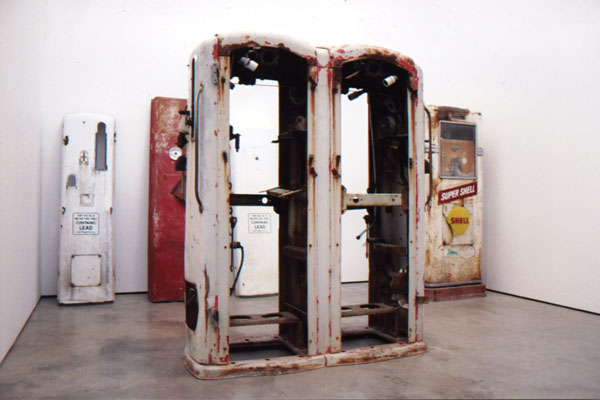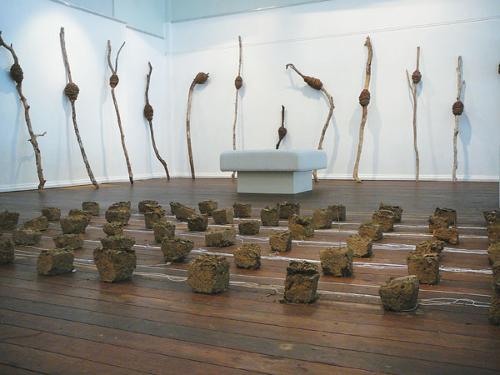
On 24 November 2007 the Australian people elected a Labor government that had campaigned on issues such as climate change and removing Australian combat troops from Iraq. The election provided hope for those concerned about global warming and vindicated the actions of over one million Australians who years earlier had marched against the invasion of Iraq by the 'Coalition of the Willing', an invasion many saw as more to do with securing oil supplies than the 'war on terror'.
The combination of dwindling oil supplies, global warming caused by carbon dioxide emissions from fossil fuel, and increasing demands for energy by rapidly developing nations like China and India pose new challenges for planners and politicians.
The 2007 Nobel Peace Prize was awarded jointly to the Intergovernmental Panel on Climate Change (based in Geneva) and Al Gore (a United States politician). The prize was awarded for their efforts to collect and disseminate greater knowledge about man-made climate change and to lay the foundations for measures needed to counteract such change. It's instructive that the prize was for peace rather than for physics or politics, recognising that the effects of climate change, global warming and increased demands for energy, unless checked, could lead to conflict.
Scientists, politicians and town planners are already acting. In the United States legislation has been introduced to reduce private vehicle fuel consumption. Masdar City (United Arab Emirates), claimed as the world's first zero waste, zero carbon, car free city, will be opened in 2009.[1] At the same time Arup, a global planning, engineering and design consultancy, has signed a contract with the Shanghai Industrial Investment Corporation (SIIC) to plan the world's first sustainable city in Dongtan, near Shanghai.[2]
Whether these projects are successful and what impact they will have on their residents in terms of freedoms and creative expression remains uncertain. The very nature of these planned cities may restrict freedom of movement and require a more compliant populace. There is also a question of long-term environmental impact. How, for example, will the proposed self-sustaining Masdar deal with the salt produced by its desalination plants? Regarding the more immediate issue of fuel supplies, how will countries deal with the looming disputes that will arise out of ownership of the remaining oil and gas fields? Politicians, planners and scientists are beginning to deal with these issues. How are artists responding?
In this issue of Artlink we profile artists who have been responding to the issues raised above. 'Virtually' criss-crossing the globe, we elicited a range of thought-provoking responses, some dealing directly with the issues, others more tangentially. What we have presented is a small sample of contemporary arts practice relating to the themes of 'oil, energy, conflict and art' but one we hope will give some idea of the range of contemporary art practice responding to our theme.
Climate change and global warming are not new issues. Artists have responded to environmental issues for decades but there is now a new urgency. Looking back in late 2007 on the catalogue essays for her 2005 exhibition Beyond Green (which is still on the US circuit) Chicago-based curator Stephanie Smith says, 'When the show closes I wonder if we'll all be reflecting back on yet another now-unimaginably dramatic turn in the conversation about sustainability.[3] Beyond Green hardly mentions climate change as an issue separate from sustainability writ large.' It has taken less than three years for what Smith describes as a 'terrific new work on climate change' to pop up at, of all places, the Miami Art Fair.
One of the interesting things that arose out of the planning for this issue was how much of it was done via the internet. The initial fishing exercise involved searching the web and this continued throughout the production of the magazine, with almost no direct contact between artists, writers and editorial staff. The result, while not perfect, and while almost certainly excluding some relevant artists, is affirmation that conversations can be had across cultures with little monetary expense and relatively low carbon usage.
I was fortunate to make contact with Sydney-based Lebanese artist and writer Mireille Astore whom I invited to 'curate' an Arab section comprising three articles from Lebanon. These bring us face to face with art and writing practice which rarely reaches art magazine readers outside the Middle East.
Overall, the essays in this issue range from the humorous to the tragic. Combined, they raise questions that go beyond human responses to what the West sees simply as 'energy crisis' or 'war on terror'. They hint at wider problems of relationships; of how, faced with the potential of global conflict, people from different backgrounds and cultures relate to one another. Beyond the energy crisis and global warming, which is being tackled by planners and for which solutions may yet be found, lie deeper issues of trust and openness. Hopefully we have started a dialogue that will continue beyond the launch of this magazine.
Footnotes












